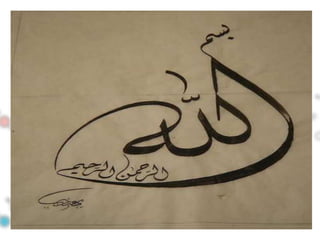
Liquification of gases
- 2. Liquification of Gases METHODS OF LIQUIFICATION
- 3. M.ZEESHAN KHALID 09050610-039 MUHAMMAD ADEEL 09050610-041
- 4. CRITICAL TEMPRATURE AND PRESSURE Two important properties of gases are important in developing methods for their liquefaction: criticaltemperature and criticalpressure. The highest temperature at which a substance can exist as a liquid, is called its criticaltemperature(Tc).There is corresponding pressure which is requires to bring about liquification at this critical temprature called criticalpressure.
- 5. For example, the critical temperature for carbondioxide is 304K (87.8°F [31°C]). That means that no amount of pressure applied to a sample of carbon dioxide gas at or above 304K (87.8°F [31°C]) will cause the gas to liquefy. At or below that temperature, however, the gas can be liquefied provided sufficient pressure is applied. The corresponding critical pressure for carbon dioxide at 304K (87.8°F [31°C]) is 72.9 atmospheres. In other words, the application of a pressure of 72.9 atmospheres of pressure on a sample of carbon dioxide gas at 304K (87.8°F [31°C]) will cause the gas to liquefy.
- 6. Differences in critical temperatures among gases means that some gases are easier to liquefy than are others. The critical temperature of carbon dioxide is high enough so that it can be liquefied relatively easily at or near room temperature. By comparison, the critical temperature of nitrogen gas is 126K (-232.6°F [-147°C]) and that of helium is 5.3K (-449.9°F [-267.7°C]). Liquefying gases such as nitrogen and helium obviously present much greater difficulties than does the liquefaction of carbon dioxide.
- 7. The value of the critical temperature of a gas depends upon its size, shape and intermolecular forces present in it. When a gas measured at its critical temperature and critical pressure, then at that stage volume of 1 mile of gas is called criticalvolume which is represented by Vc. The critical volume of O2 is 74.42 cm3 mol-1 , of CO2 is 95.65cm3 mol-1 and that of H2 is 64.51cm3 mol-1
- 9. Compressing the gas at temperature less than at its critical temperature In the first approach, the application of pressure alone is sufficient to cause a gas to change to a liquid. For example, ammonia has a critical temperature of 406K (271.4°F [133°C]). This temperature is well above room temperature, so it is relatively simple to convert ammonia gas to the liquid state simply by applying sufficient pressure. At its critical temperature, that pressure is 112.5 atmospheres, although the cooler the gas is to begin with, the less pressure is needed to make it condense.
- 10. Making the gas do some kind of work against an external force causing the gas to lose energy A simple example of the second method for liquefying gases is the steamengine. The principle on which a steam engine operates is that water is boiled and the steam produced is introduced into a cylinder. Inside the cylinder, the steam pushes on a piston, which drives some kind of machinery. As the steam pushes against the piston, it loses energy. That loss of energy is reflected in a lowering of the temperature of the steam. The lowered temperature may be sufficient to cause the steam to change back to water.
- 11. Making gas do work against own its internal forces, also causing it to lose energy In some ways, the simplest method for liquefying a gas is simply to take advantage of the forces that operate between its own molecules. This can be done by forcing the gas to pass through a small nozzle or a porous plug. The change that takes place in the gas during this process depends on its original temperature. If that temperature is less than some fixed value, known as the inversion temperature, then the gas will always be cooled as it passes through the nozzle or plug.
- 12. In some cases, the cooling that occurs during this process may not be sufficient to cause liquefaction of the gas. However, the process can be repeated more than once. Each time, more energy is removed from the gas, its temperature falls further, and, eventually, it changes to a liquid. This kind of cascade effect can, in fact, be used with either of the last two methods of gas liquefaction.
- 13. Thanks for paying Attention
